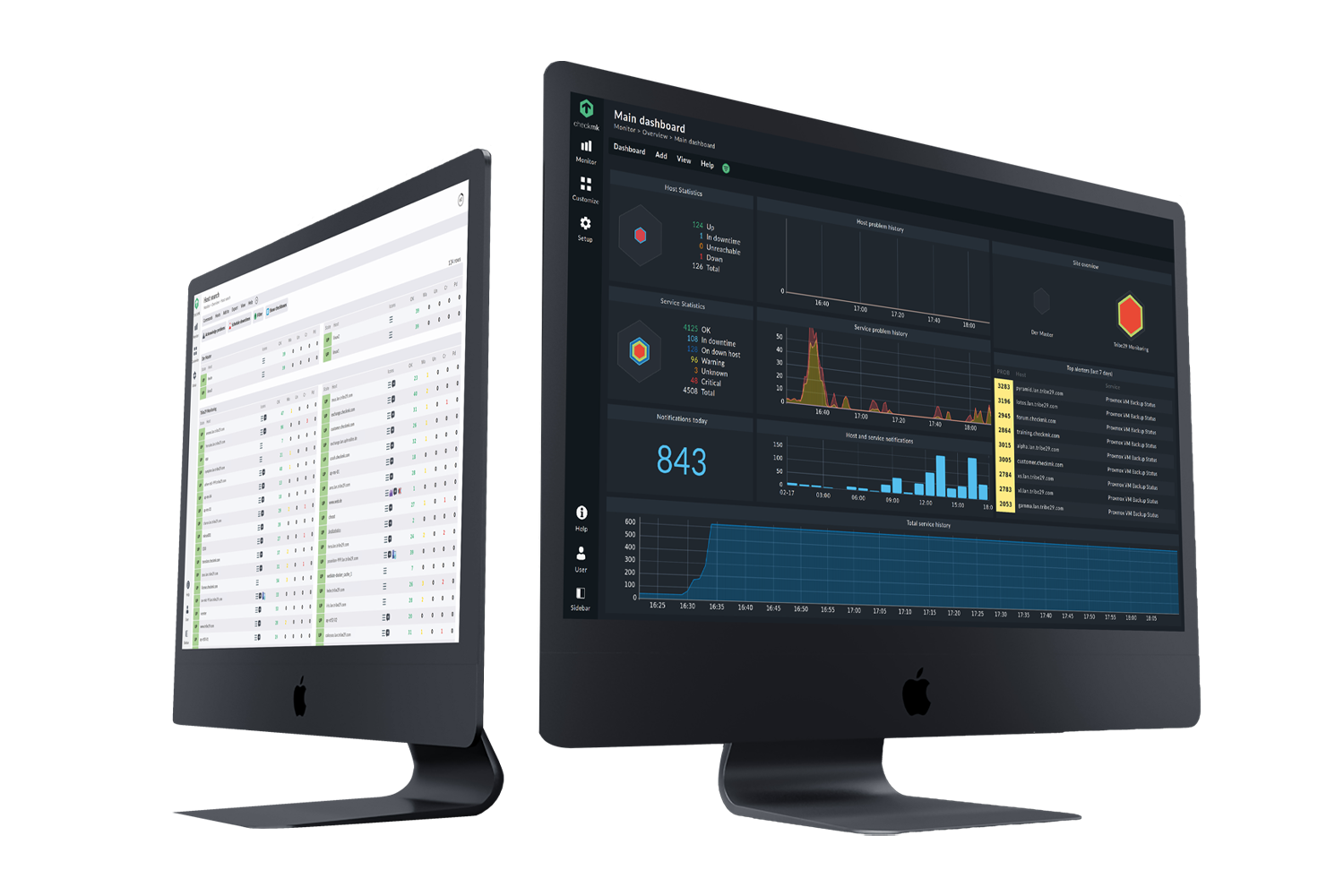
Dear reader
We are pleased that you have found Checkmk.
As a monitoring software, Checkmk provides comprehensive and specialized solutions for dealing with the very diverse environments within IT infrastructures. This inevitably requires a very comprehensive documentation which goes beyond the mere description of the obvious. Our User Guide will help you as much as possible to better understand Checkmk, to implement solutions for your requirements with Checkmk, as well as helping you to learn new approaches to solving problems.
To make the handling of Checkmk as easy as possible, the articles in this User Guide follow rather unusual approaches in many places. It is almost never a matter of simply following a prefabricated sequence of individual steps. Rather, it is intended to give you, the reader, a deeper understanding of a feature in Checkmk.
To briefly summarize, our most important intention is that the User Guide should be helpful. And it is most helpful when you can make use of our descriptions as blueprints for implementation and for solving problems in your own environment. Read more…
New to Checkmk?
There is a first time for everything, even with Checkmk. Since you will be exposed to a large number of options and functions, it can sometimes be difficult to determine the right steps on this journey.
Nevertheless, to make sure you can start your first Checkmk monitoring quickly and more easily, we have written a Beginner's Guide. This will give you a compact step-by-step introduction to Checkmk, and it is structured in such a way that you can read it quickly from beginning to end and get started with Checkmk right away. Therefore, it is short and concise and does not dwell on unnecessary details. By the end of the Beginner's Guide you will have a functional Checkmk system.
Featured Topic: Checkmk 2.3.0
Checkmk 2.3.0 contains many improvements at detail level and some exciting new features. For example, Checkmk Cloud integrates synthetic monitoring with Robotmk for the first time. Numerous usability improvements make it easier to work with Checkmk. And systems that are jointly administered by many people in particular benefit from improved change management. Anyone programming extensions for Checkmk can now access improved Check and Graphing APIs.

Updating Checkmk and using multiple instances
Checkmk 2.3.0 – the highlights

Checkmk 2.3.0 contains many improvements at detail level and some exciting new features. For example, Checkmk Cloud integrates synthetic monitoring with Robotmk for the first time. Numerous usability improvements make it easier to work with Checkmk. And systems that are jointly administered by many people in particular benefit from improved change management. Anyone programming extensions for Checkmk can now access improved Check and Graphing APIs.
Checkmk Synthetic Monitoring
As of version 2.3, Checkmk Synthetic Monitoring is a new add-on based on Robotmk. Robotmk is in turn based on the leading open source tool Robot Framework for test automation. The seamless integration of Robot Framework offers several advantages. No adaptation of existing tests is necessary and the UI of Checkmk enables access to IT infrastructure monitoring as well as application monitoring. In this way, Checkmk combines proactive and reactive monitoring in one platform.
New active checks for web and certificate monitoring
Checkmk 2.3.0 contains a new active check for HTTP connections and certificates, which is significantly better performing, more robust and easier to configure than the previous check_http. In addition, it is now possible to monitor several things at once with a single rule, for example HTTP response code, response time and certificate validity.
The previous check_http contained basic functionality for checking certificates and the check_httpv2 mentioned in the previous section improves on this. However, both have a few things in common: First of all, they are just only applicable if a certificate is used at an HTTPS endpoint, moreover, they lack the possibility of a detailed examination of the certificates, for example for contained Certificate Subject Alternative Names or the issuing authority. We have implemented the resulting user requirements with the new check_cert.
